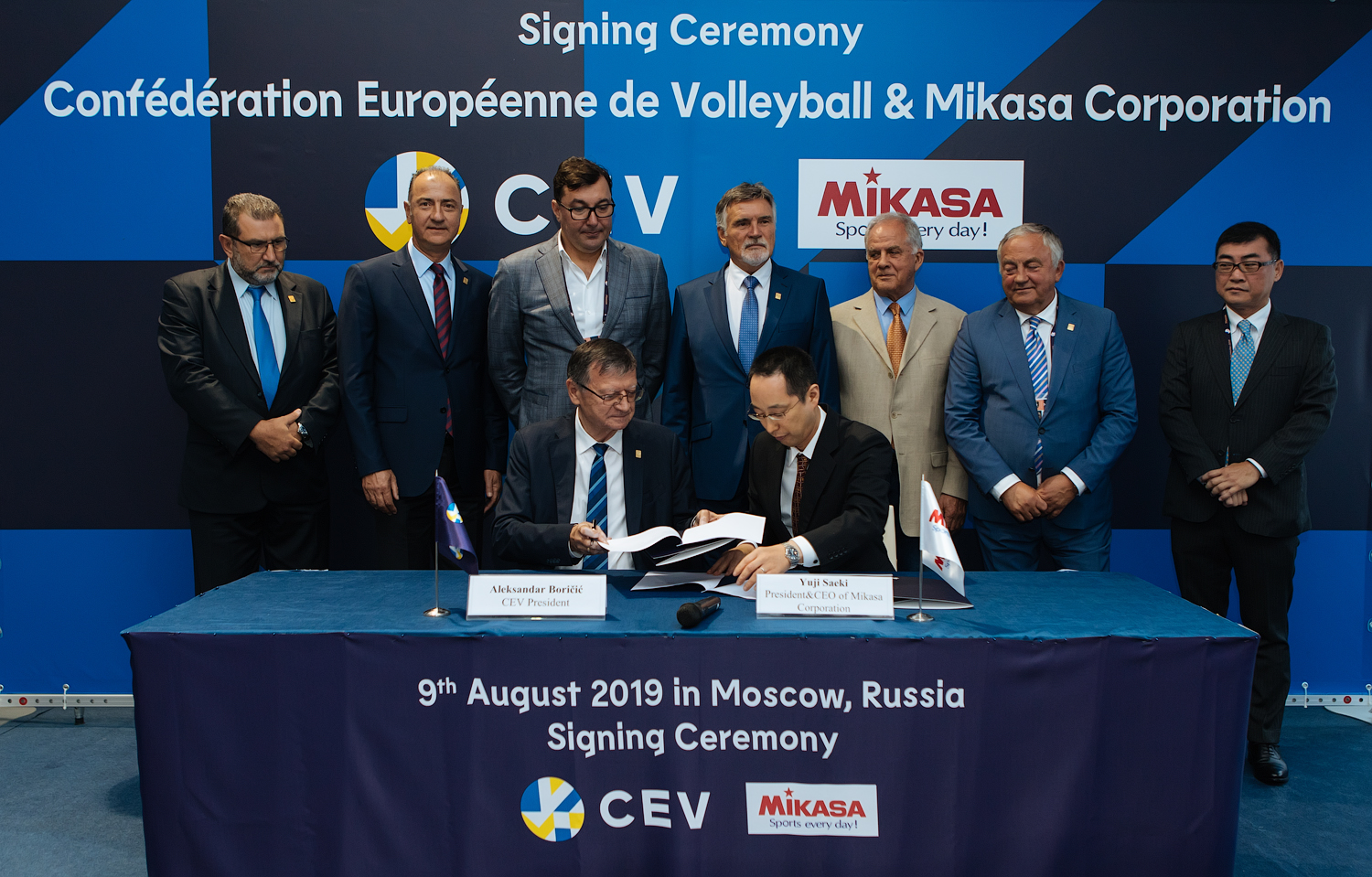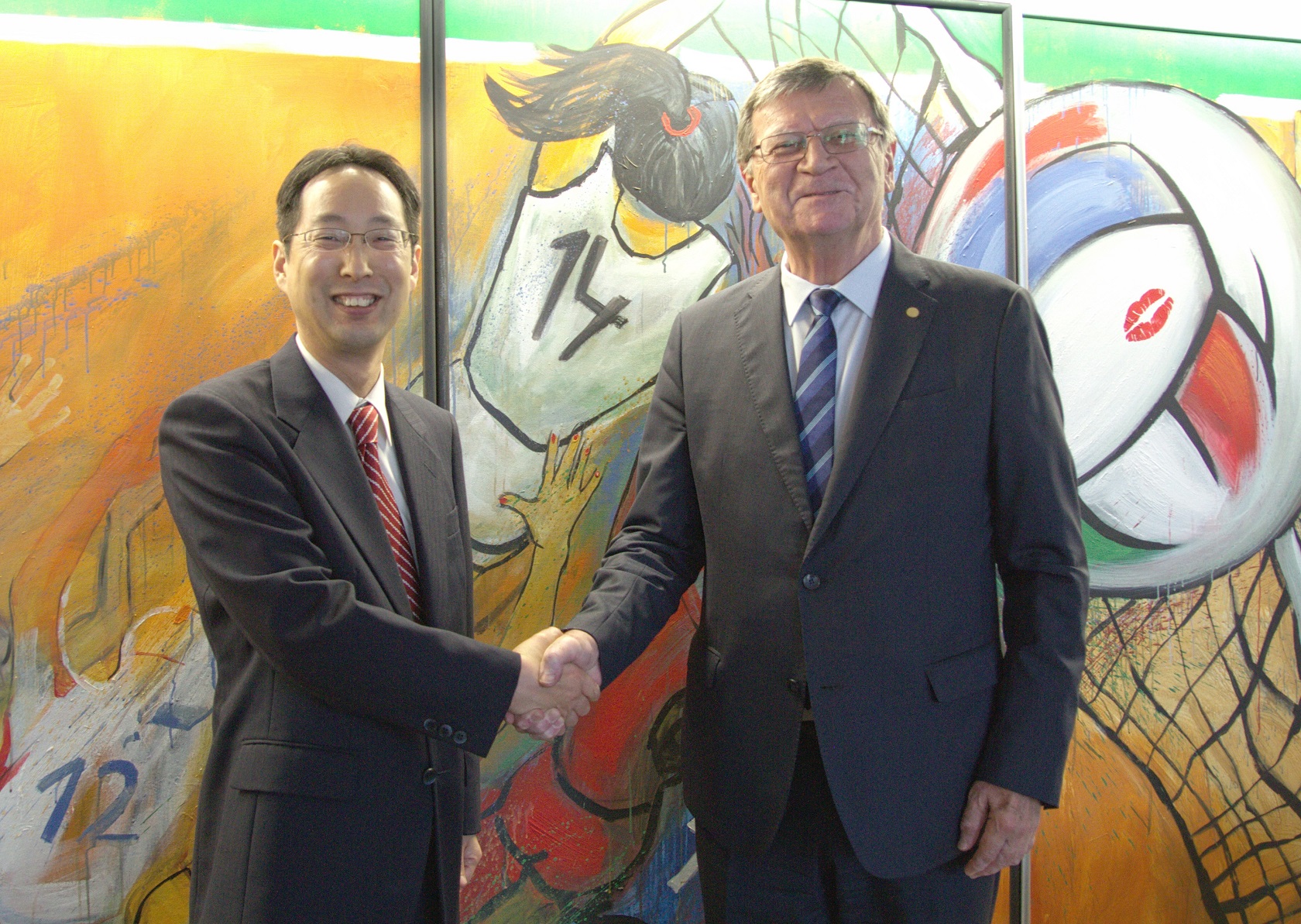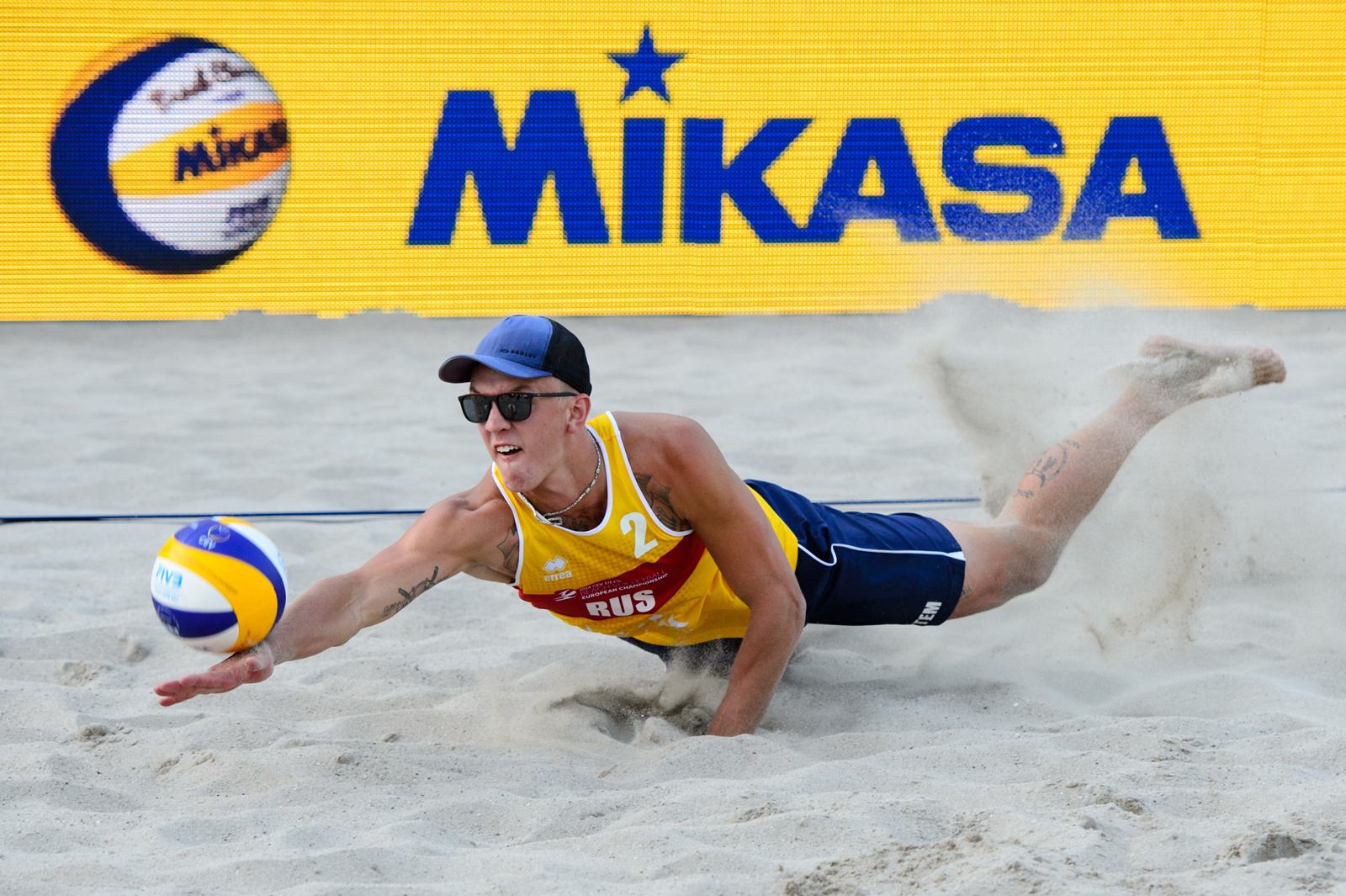Relationship
The CEV and Mikasa have been working together since the 1990s to grow Volleyball and the two parties have recently extended their cooperation in a new agreement lasting up to 2024. The focus is very much on growing Volleyball at all levels, especially at the grassroots level, with the help of the high-quality equipment provided by the Japanese manufacturer.

Aleksandar Boričić"We are delighted and proud to be partnered with Mikasa, a company that has been heavily involved in the evolution of Volleyball through the decades."
CEV President
The first Volley ball
The first volleyball was designed by William G. Morgan, the inventor of the game of volleyball. It consisted of three layers. The first was a latex bladder made from material like a bicycle tire, the second was a cheesecloth material around the bladder, and the third was a leather outer layer. This was satisfactory and modern volleyballs have not changed significantly since the first design.
Introduction to the Olympics
In 1964, at the Summer Olympic Games in Tokyo, when Volleyball was first introduced to the Olympics, Mikasa balls became also the official balls for the Olympics.
Shortly after, the MIKASA ball was adopted by FIVB and CEV in all major international tournaments of volleyball. The CEV have been working closely with Mikasa, initially through their European distributors, since the mid-70s.
Major design changes in the 1990s
In the 1990s, MIKASA introduced the first colored and synthetic competition balls. MVL200 and MVP200 models for indoor and VS200 for Beach Volleyball which revolutionised the idea of ball and the idea of volleyball.
For the Olympics in Beijing, while for decades the volleyball was stitched with an 18-panel construction, the company Mikasa developed and manufactured a new design and presented the MVA 200 model. This new ball has an eight-panel design to allow more hand contact on the ball for improved accuracy. It has dimples which are meant to create a truer flight pattern and it was the first major design change in over 100 years.
The Beach Volley ball
In 2010 MIKASA created VLS 300 for Beach Volleyball, its performances were so high that it conquered beachers immediately. It is made of an exclusive, near water proof, micro fiber material which provides that “broken in” softness desired and paralleled with the durability and strength required by the world’s best athletes.
The water resistance is extremely important as many materials absorb water creating a heavier ball, which causes for an erratic flight pattern, inconsistent setting passes and is associated with the increase of severe shoulder injuries in athletes.
The Champions League ball
In 2014, CEV and MIKASA developed a special ball for the highest club competition in the world, the CEV Champions League. In the frame of the “Green Way campaign” launched by CEV, Mikasa introduced the green and yellow ball known as the MVA200CEV for the first time that year.
In 2019, following the redesigning of the indoor ball, CEV and Mikasa have decided to redesign the green ball, with an identical design to the V200W but keeping the typical green and yellow colours specifically associated with the Champions League.
Snow Volley ball
There are not many ball sports which are played in the snow, which made the development of an appropriate ball challenging as certain specific requirements had to be fulfilled. Snow Volleyball is played under extreme conditions (snow, wind, sun) in a high temperature range on high altitudes. Due to the wet conditions in the snow, the ball needed to be waterproof and the surface should not get slippery. In December 2018, the new Mikasa SVR335R Snow Volleyball was used for the first time in a CEV Snow Volleyball European Tour event.
New design in 2019
In 2019, the V200W is the new FIVB official game ball and replaces the MVA200. It was first introduced at the 2019 FIVB Volleyball World Cup. It features a perfectly balanced, 18-panel aerodynamic design that improves ball movement and gives players greater control. With enhanced visibility, the new indoor ball will optimise the quality of play and maximise excitement on the court. Pictured here is the new ball in the Champions League Volley colours.

Company Information
Name and Address
MIKASA CORPORATION
1, Kuchi, Asa-cho, Asakita-ku, Hiroshima, Japan
Representative President and CEO
Yuji Saeki
Date of Establishment
1-May-1917
Capital
120 million yen (as of November 2014)
Factory Site
9,710 square meters Floor area total 14,800 square meters
Number of Employees
139 (as of July 2016)
